student success
Improving College Graduation Rates Through Student Success Assessments
Student-centered colleges and universities have prioritized student success for a longtime, but there has been more buzz around retention and student success in recent years. Institutions are realizing that with the “demographic cliff” looming, they cannot rely on improving recruitment alone to keep their enrollment numbers steady or growing. As the pool of traditional college-bound high school students flattens and shrinks, higher education leaders are working to more intentionally keep the students they have.
Fiscal perspective and mission perspective

Student success is important for two reasons. First, from a fiscal perspective, colleges and universities invest a lot of money to attract and recruit new students. While that’s important, it’s definitely a cost-effective strategy to also intentionally retain those students once you’ve gotten them to campus. This lets the institution protect those tuition dollars, especially when so many college budgets are tuition driven. If we think about bringing students in the front door with admissions, we want to be sure that we have closed the back door too so they stay until they successfully graduate.
That’s the mission perspective why student success is important. Colleges and universities exist to educate students and to guide them to a successful completion of their educational goal. We need to keep students enrolled to do that. Related to that, strong retention rates and graduation rates are going to help attract new students to the college. Graduates of the school will refer future students, while successful graduates are also going to be your future alumni who have the potential to give back to the college financially. So it really is a chicken and egg situation, with strong student retention leading to strong student recruitment, which then potentially leads back to strong retention of students—all of that increasing the fiscal health of the institution.
That illustrates how college completion is not only essential to the mission of higher education, but is becoming critical to the survival of colleges and universities. With that pool of traditional students flattening, campuses cannot afford to lose students. Furthermore, students who withdraw lose out on their investment in college and especially the lifelong benefits of obtaining a college degree. That is especially true for first-generation students and those from lower socioeconomic backgrounds, whose degrees and opportunities that come with them help them achieve greater economic success and social mobility. Graduating from college is good for students in general, as well as for our culture and economy. On the institutional side, there are increasing numbers of institutions that have been forced to close because they did not have sustainable enrollments. Colleges and universities therefore have a host of incentives to invest in guiding more students toward completing their degrees.
Cost-effective ways to impact student success #1: Motivational assessments
Given that institutions are seeking cost-effective ways to improve student success and graduation rates, RNL recently conducted a study to see if our partner institutions see a positive impact on their graduation rates. The answer is yes.
Motivational assessments are a way to gather data from incoming students as they first enter your institution, either during orientation or as part of a first-year experience course. These data provide valuable information to build relationships with advisors and to get students connected with the resources that will set them up for success during that very first term, when their decisions to stay or go are being formed. RNL offers the College Student Inventory™, part of the Retention Management System (RMS), to gather this information from first-year students. We already know from our benchmarking reports that institutions are using motivational surveys and find them to be effective, across institution types:
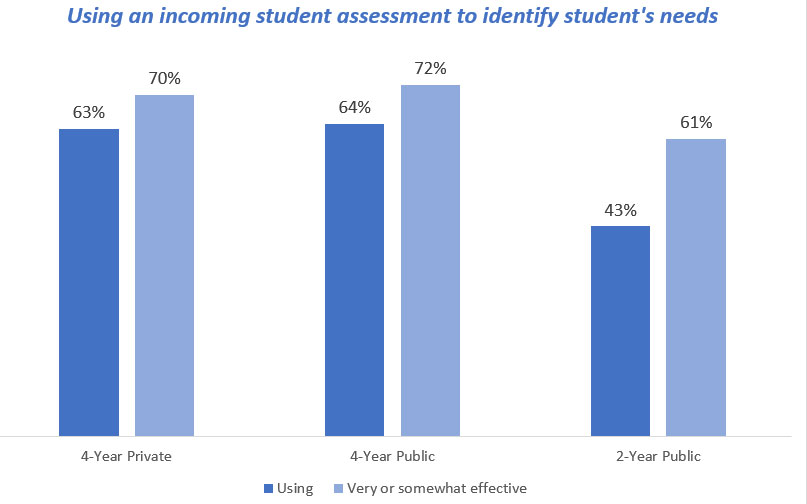
Now, following a review of IPEDS data for partner institutions compared with comparable non-client institutions (based on enrollment size and region of the country), we can see that institutions assessing student motivation with the College Student Inventory of the Retention Management System (identified here as RMS Clients) have better four-year graduation rates than non-clients, across all institution types.
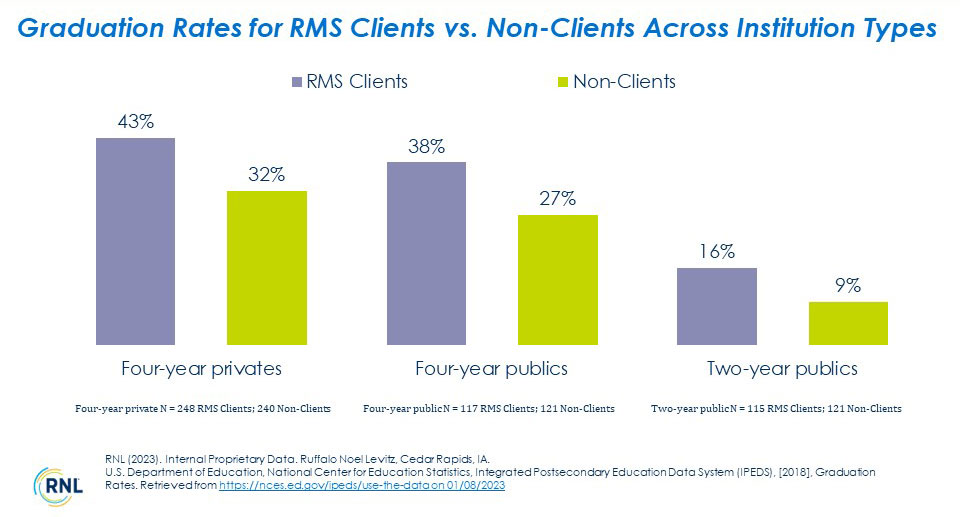
The potential impact becomes even more clear when we look at the four-year private and public institutions by enrollment size, with smaller institutions having the greatest improvement in graduation rates when they use student assessments:
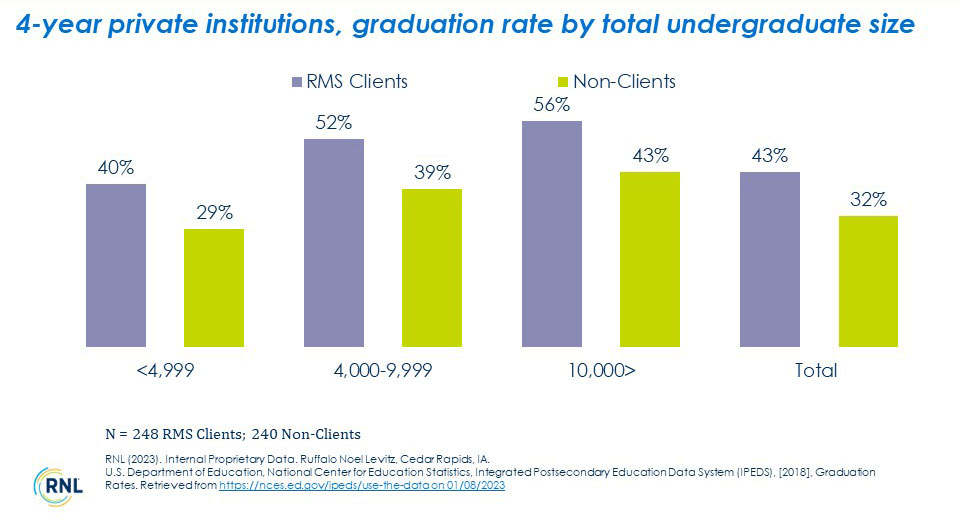
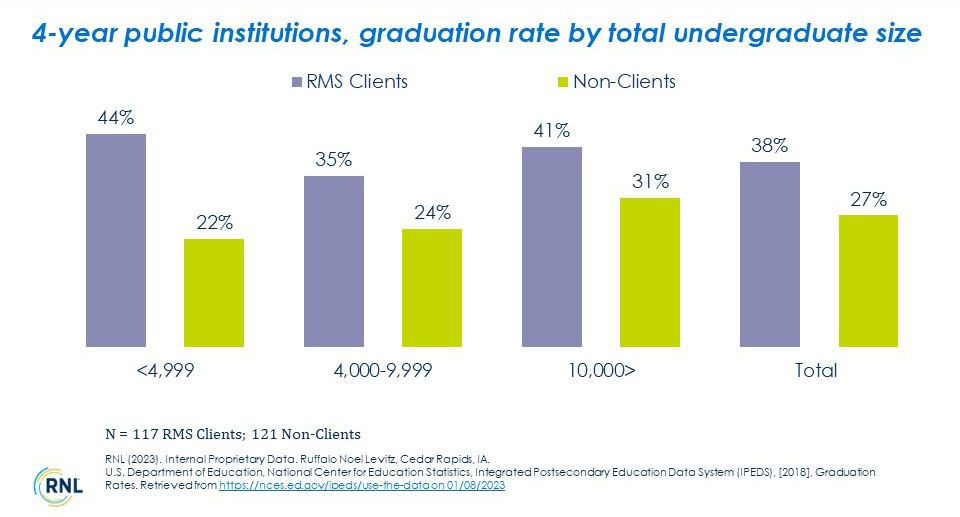
Retain Your Students, Sustain Your Campus
Find out how you can help more students overcome the academic, financial, and emotional pressures that can lead them to withdraw from college. Join us for this webinar to hear about a unique new solution that is strategically focused, data driven, and serves the whole student.
Cost-effective ways to impact student success #2: Satisfaction assessments
Student satisfaction assessments provide the opportunity to receive student feedback across all class levels served by the institution. These surveys are done either in the fall or the spring term and provide a valuable picture of what matters to students and where the institution is performing well (institutional strengths) and where there is room for improvement (institutional challenges). Slicing the data by class level or by programs/majors can further clarify where actions are needed. RNL offers the Student Satisfaction Inventory™ for traditional students, along with surveys for nontraditional populations as part of the Satisfaction-Priorities Surveys (SPS) to gather this student feedback.
The RNL retention benchmarking reports also document that institutions are using satisfaction assessments and finding them to be effective, across institution types:
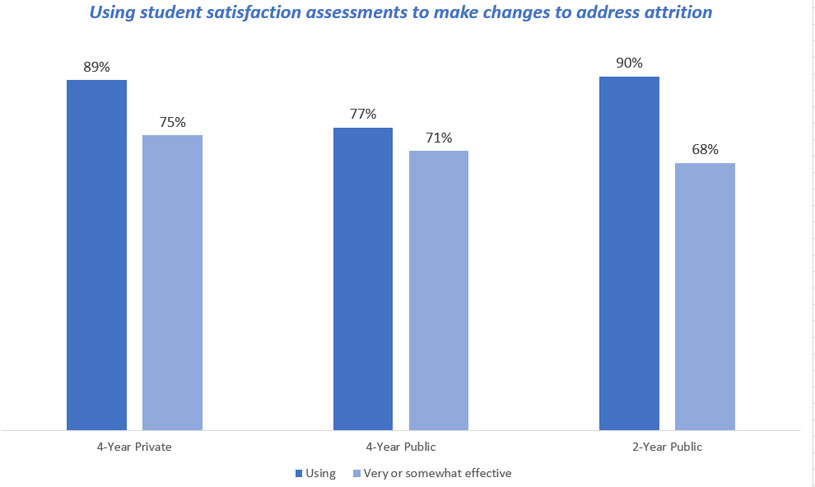
Again, similar to the analysis that was done with the review of IPEDS data for partner institutions compared with comparable non-client institutions (based on enrollment size and region of the country), we can see that institutions assessing student satisfaction with the Student Satisfaction Inventory of the RNL Satisfaction-Priorities Surveys (identified here as SPS Clients) also have better four-year graduation rates than non-clients, across all institution types:
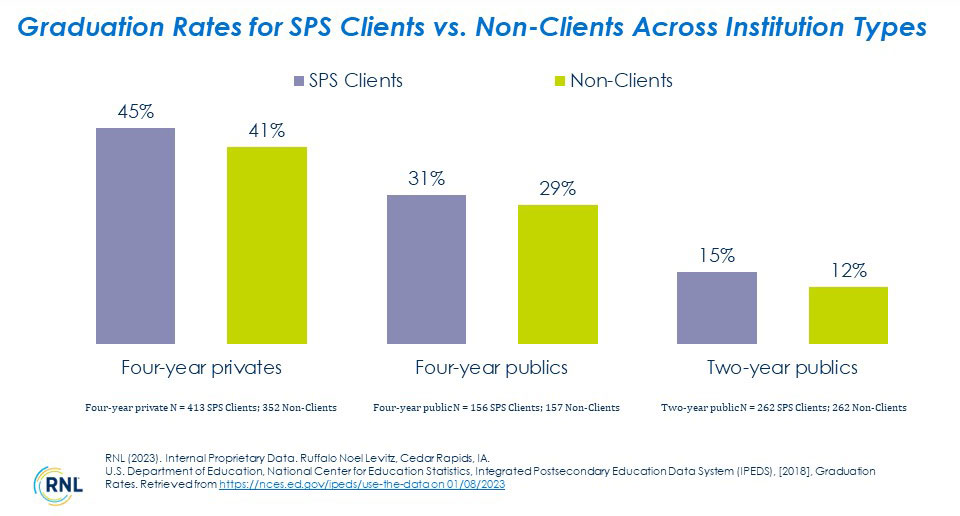
As with the RMS comparison, we also see greater impacts based on the institution size for four-year private and public institutions:
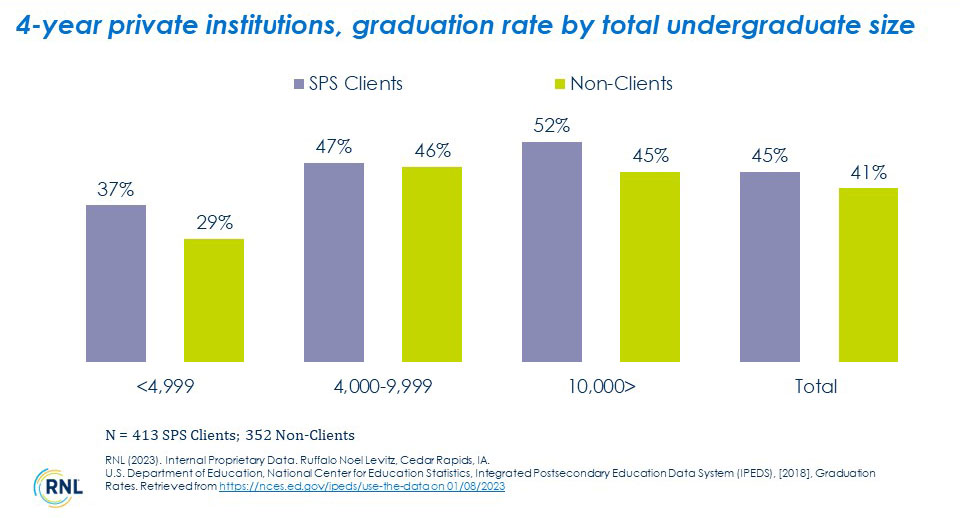
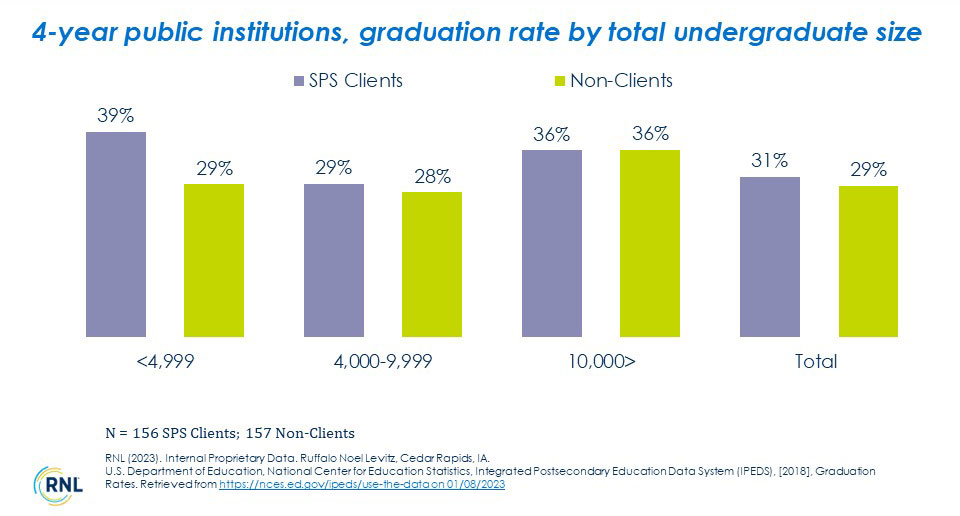
What you do on campus matters
Keep in mind that assessing students and just gathering the data is not enough to see graduation rates improve. You need to be willing to take action with what the data are telling you. For incoming students, you need to provide tutoring and career services; you need to provide the students opportunities to connect and engage with campus; and you need to be proactive with helping them navigate your systems. For the population as a whole, you need to be willing to make improvements in the areas your students care about; you need to offer classes they need when they need them; you need to effectively communicate about financial aid; and you need to create a campus climate that is welcoming and student-focused.
Using data to guide your actions and to inform your priorities will put you in the best position to improve term to term retention and ultimately your graduation rates, for overall student and institutional success.
See how you can increase student success and strengthen institutional stability
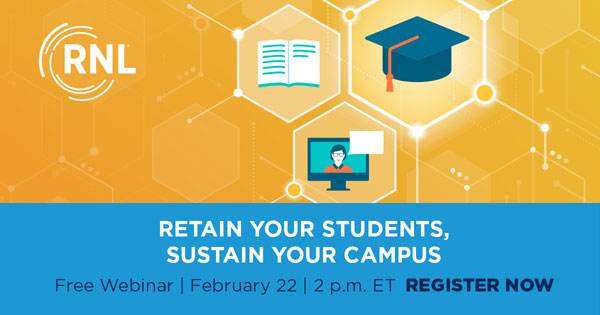
My colleagues Sherri Erkel, Kim Myrick, and I will discuss a new approach to increasing student success at our webinar, Retain Your Students, Sustain Your Campus. During this 30-minute presentation, we’ll look at the assessments I’ve mentioned along with predictive modeling for student success and the increasing need for mental health and wellness support for students.
I encourage you to catch the webinar (or sign up to receive on-demand access if you cannot attend). It’s a vital topic and it will illuminate how you can strengthen both student success and the long-term health of your institution. You can learn more and register.
